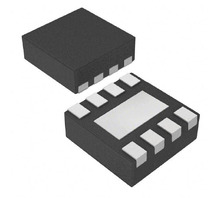Manufacturer Part Number
LM5002SD
Manufacturer
Texas Instruments
Introduction
The LM5002SD is a versatile DC-DC switching regulator featuring adjustable output and capable of operating in various topologies including Boost, Flyback, Forward Converter, and SEPIC. Designed for a diverse range of power management applications.
Product Features and Performance
Adjustable output voltage from 3.1V to 76V
Supports Boost, Flyback, Forward Converter, SEPIC topologies
Isolation Capable Output Configuration
Operates over a wide input voltage range from 3.1V to 75V
Capable of delivering up to 400mA output current
Switching frequency adjustable from 50kHz to 1.5MHz
Supports surface mount technology installation
Product Advantages
High flexibility in output voltage and current settings
Suitable for various demanding applications due to its wide range of input voltage
High-frequency operation reduces the size of passive components
Key Technical Parameters
Voltage - Input (Min): 3.1V
Voltage - Input (Max): 75V
Voltage - Output (Min/Fixed): 3.1V
Voltage - Output (Max): 76V (Switch)
Current - Output: 400mA (Switch)
Frequency - Switching: 50kHz ~ 1.5MHz
Operating Temperature: -40°C ~ 125°C
Quality and Safety Features
Operates effectively within a wide temperature range of -40°C to 125°C
Designed for reliable performance in various environmental conditions
Compatibility
Mounting Type: Surface Mount
Package / Case: 8-WDFN Exposed Pad
Supplier Device Package: 8-WSON (4x4)
Application Areas
Ideal for use in telecommunications, automotive, industrial, and consumer electronics sectors where efficient power conversion and management is required.
Product Lifecycle
The LM5002SD is classified as Obsolete
Alternatives or replacement products should be considered for newer designs
Several Key Reasons to Choose This Product
Flexible input and output voltage range supporting various application needs
Adaptable to multiple topologies allowing for design versatility
High switching frequency minimizing the size of necessary external components
Robust thermal and operational parameters ensure reliability in rugged applications
Obsolescence status necessitates consideration for legacy systems or evaluation for newer replacements




 LM5001SDPBTexas Instruments
LM5001SDPBTexas Instruments LM5001SDXNS
LM5001SDXNS LM5005EVALTexas InstrumentsBOARD EVALUATION LM5005
LM5005EVALTexas InstrumentsBOARD EVALUATION LM5005